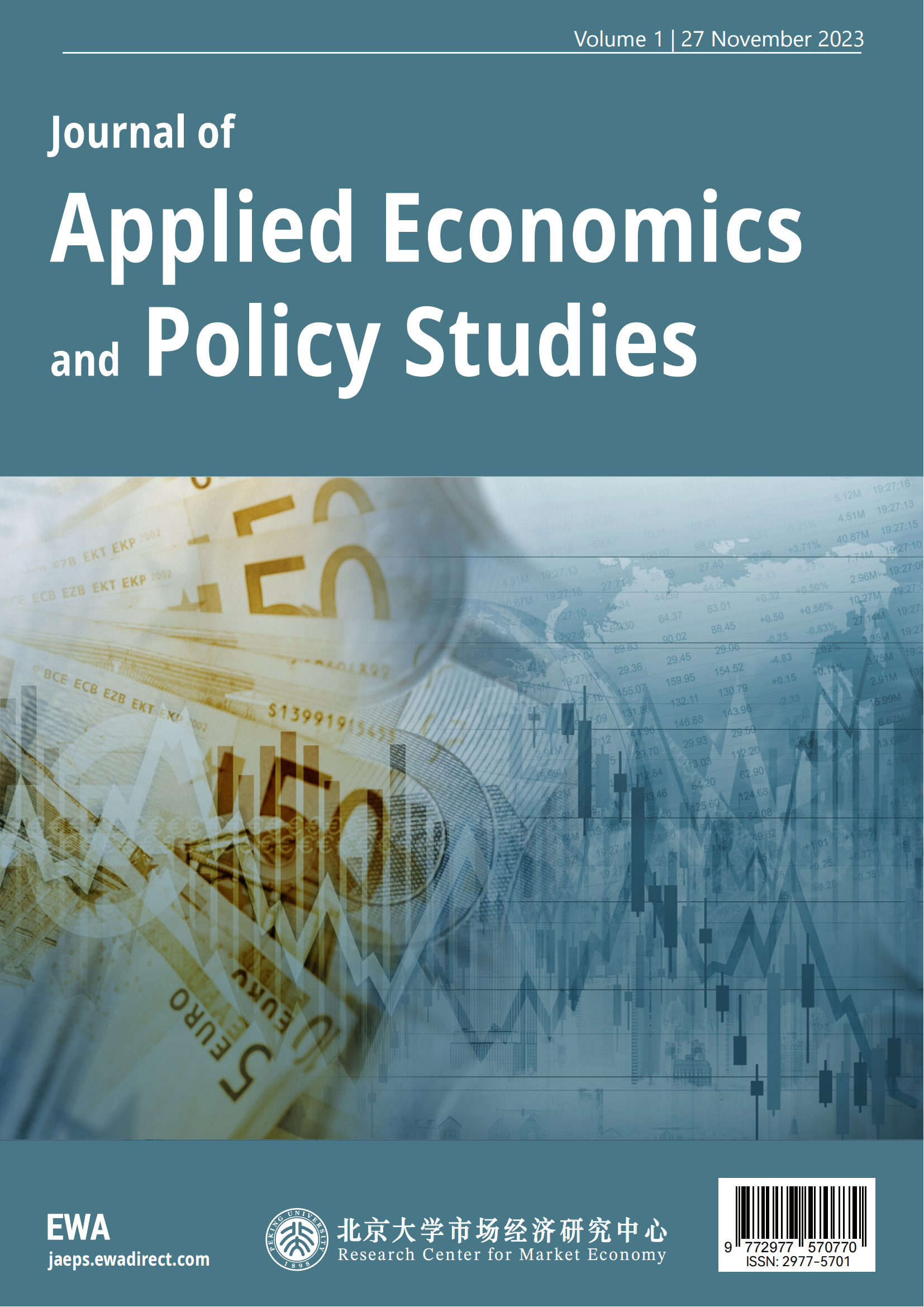1 Introduction
Blind box means that different items are placed inside the box, and there is no mark on the outside of the box. Consumers only know what specific style they have bought after opening it, which has a strong randomness. Born in Japan, this trend was originally called mini figures, but after becoming popular in Europe and the United States, it became known as blind box. With a great popularity, blind box cuts into the market of young consumers in recent years, swept the whole of China, its fanatical consumption has become a social phenomenon of public concern. Today, many industries are deeply affected by blind box products, have begun to open a ‘blind box marketing’ model, such as archaeological blind box, stationery blind box, beauty blind box, snack blind box and other ‘blind box +products’ business model rapidly emerged. Many businesses find that the use of ‘blind box marketing’ sales model makes perfect use of people's curiosity, gambling psychology and other inherent characteristics, so that consumers deeply involve in it, stimulating consumers' desire to buy and re-purchase rate, thus greatly expanding sales. ‘Blind box marketing’ combined with other forms of marketing means, led to a new business model, from the perspective of the macro consumption environment, sales have developed from selling commodities to selling entertainment in the current era of high material abundance. On the basis of existing studies, this paper first summarizes the relationship between blind box marketing and consumer behavior through existing literature. Then following the basis to study the effect of combining blind box marketing with other marketing means from the perspectives of 4P marketing theory and ‘psychological motivation’, ‘demand motivation’ and ‘investment motivation’, as well as consider the direct or indirect effects on consumer behavior. This paper is helpful to expand the theoretical research of blind box marketing model, and can also provide reference for related enterprises.
2 Literature Review
2.1 What Is a Blind Box? What Is Blind Box Marketing?
‘Life is like a box of chocolates; you never know what you are gonna get.’ This is a blind box, a product with a random and probabilistic content only after taking it apart [1]. Drawing a blind box is equivalent to drawing an indefinite reward with great randomness [2]. Blind box marketing is to use the nature of the ‘blind box’ product marketing to expand sales, the focus of this marketing model is a ‘blind’ word. It stimulates people's curiosity psychology and even gambling psychology in a randomized and probabilistic way, some consumers are unable to stop and get addicted, thus turning on irrational consumption.
In recent years, blind box marketing has been continuously innovated and developed in China, and the types of blind boxes have also developed from the initial doll to beauty makeup, digital collections, stationery, books, archaeology, food and air tickets. Taking ‘blind ticket box’ as an example, the ‘blind ticket destination box’ campaign launched by Tongcheng Travel has attracted more than 10 million users to participate in purchasing, and many online tickets ordering software have launched super low-cost ‘blind box tickets’ to increase the number of purchases. Another example is the food blind box, the feature of this blind box is that leftover meals can be packaged and sold at a low price, eliminating waste. It is a new form of food delivery influenced by the triple factors of environment, economy, and society, and it can also increase consumers’ purchase Intention [3].
‘Blind box marketing’ is inspired by the product ‘blind box’, including blind box itself. This item first appeared in Japan, at the end of the Meiji period, in the 1870s, Japanese department stores used undisclosed contents of the ‘blessing bag’ as a way to deal with unsalable products at the end of the year. In the 1980s, Japan combined self-service vending machines with toy plastic model products, producing an ‘egg twisting machine’ specifically for the self-service marketing of model products. In the 1990s, ‘collection card’ marketing model appeared in China, which appeared in a series of forms to stimulate consumers' interest in collection. At the beginning of the 21st century, Sonny Angle was introduced into China, and the ‘tide play + blind box’ gameplay became popular, and the blind box launched by ‘POPMart’ (a well-known brand of Chinese tide play blind box) quickly swept the country. Nowadays, the blind box sweeps into the young consumer market and combined with archaeology, beauty makeup, snacks, stationery and other goods, producing a ‘blind box marketing’ business model and gradually leading to the trend of continuous consumption.
2.2 Economic Theories Related to Blind Box Marketing and Consumer Behavior
2.2.1 Consumer Behavior Theory in Blind Box Marketing
The consumer behavior theory proposed and defined by Gossen, Jevons and Walra in the 20th century focused on the consumer choice theory, which studied how consumers make decisions to maximize utility under the premise of the rational human behavior.
In blind box marketing, the major factors affecting consumer decision are desire, preference, price of commodity, and disposable income. Human desire is finite for a specific number of commodities, which is shown by the theory of ‘diminishing marginal utility’. In a certain period of time, under the premise that the consumption quantity of other commodities remains unchanged, each increase of one unit of commodity quantity will bring diminishing utility to the subject. Due to different preferences for the commodity brought by different people, the degree of utility satisfaction will also be different. For commodity prices, John R. Hicks (1945) proposed the substitution effect and the income effect, which showed that changes in relative price and real income caused by price changes respectively lead to changes in demand. Also, changes in budget lines due to changes in income or prices can also affect consumer behavior decisions. People tend to reach their maximum utility when the budget line intersects the indifference curve (MU1/P1=MU2/P2) (E. lutsky, 1915), where the indifference curve is affected by desire and preference, and the budget line is affected by price of commodity and disposable income.
2.2.2 Behavioral Economic Theory in Blind Box Marketing
Behavioral economics believes that the rationality of human actions is limited, and people's behavioral decision-making process often presents the pursuit of ‘satisfactory solution’ rather than ‘optimal solution’. Famous behavioral economists Tversky and Kaheman (1979) put forward the famous ‘prospect theory’, which explains that in the process of behavioral decision-making, people's subjective preferences and external selection conditions will alter their own decision-making expectations, and then will dominate the final decision-making results [6].
From the perspective of behavioral economics, blind box marketing amplifies people's ‘irrational’ consumption behavior and stimulates people's purchase desire. When consumers purchase a blind box, its unique ‘unknown’ attribute has an impact on consumer psychology. When consumers buy a blind box, there will be changes in their purchase desire, purchase expectation, risk appetite etc. At the same time, consumers will have cognitive biases on their own consumption motivation and consumption power, which will prompt consumers or potential consumers to take ‘satisfactory’ consumption behavior decisions under constraints [7].
First of all, consumers will have consumption motivation before buying blind box goods Chen Jiawei [8] concluded that blind box marketing takes advantage of consumers' psychological pursuit of uncertain stimuli, and places a positive attitude on consumers and the influence of some external stimuli, such as advertising or outer packaging, (called Stimulus-organism response theory) leading to novelty seeking, which easily have addiction [2]. Young people are the main target customers, who are often curious about new things and easy to take action. Under the influence of the environment, their piority is to buy popular goods, and ‘herding effect’ exists. Once the blind box is prevalent in a group, most young people hope to have ones so as to follow the trend and conform to the crowd. In addition, blind box marketing will launch ‘limited edition’ and other scarce goods. When people have a certain desire for scarcity, ‘comparison psychology’ will lead to conspicuous consumption. Under the influence of loss aversion, people may have a nostalgia for the cost already invested. Also combined with ‘loss aversion’ and ‘availability heuristic’, people will have a sentimental attachment to the cost that has been invested and overput the probability event, thus increasing the investment in blind box purchase [9]. At the same time, a serious premium in the second-hand market may cause by the scarcity, which will soon emerge the speculative demand under the blind box economy and will gradually become the main consumption motivation of many consumers under the blind box economy [7].
Secondly, consumers' purchasing power is also necessary for commodity consumption, peolpe’s confidence of consumption is absolutely conducive to the improvement of sales. The price is relatively lower than normal goods for blind box marketing, the decrease in price will increase the actual income so that will lead to the increase in demand, thus producing the ‘anchoring effect’ according to the income effect theory proposed by John R. Hicks (1945). In addition, when consumers browse some ‘lucky information’ that draws ‘lucky message’, they seldom consider over. In this scenario, consumption impulse is generated due to overconfidence and survivor bias, thus enhancing consumers' behavioral motivation, and subsequently triggering people to make consumption behaviors [7].
2.2.3 Previous Studies on Blind Box Marketing and Consumer Behavior
Yu Xueni [7] used Fogg behavior model as the framework to analyse the behavioral economic mechanism of consumer behavioral decision-making motivation, ability and triggers under the blind box economy. The marketing stimulates people's psychological effects (such as ‘anchoring effect’, ‘curiosity psychology’, ‘loss effect’, ‘capital effect’, ‘bird cage effect’, ‘herd effect’, ‘comparison psychology and showing off psychology’, ‘Speculative psychology’ [10] through hidden money, the premium marketing of second-hand market, unequal information, social platforms, self-positioning, geographical location etc. Thus, people's desire is stimulated and their buying behavior is triggered. Consumers are also often affected by the blind box uncertainty, an optimistic attitude and some external stimuli, resulting in curiosity [2]. Additionally, the influence of emotional motivation and social support behind blind box consumption on individuals seeking psychological comfort will also lead to psychological motivation. Supportively, the results of Gao Yutong [11] also demonstrate that three psychological factors, including social mentality, gambling mentality, and curiosity are recognized by the public as the main factors for influencing consumers' purchase decisions in the blind box market. Besides, the sense of expectation, dependence and companionship brought by unpacking the blind box provide an outlet for people to release their emotions under high pressure. When life is stressful, compensatory consumption becomes an effective way for consumers to compensate for the lack of social support and sense of power and belonging. The research shows that these two psychological motivations often have a positive impact on consumer purchasing behavior [12].
In addition to the psychological effects above, Fan Linlin and Wang Yuxue's study (2023) assumed that customers' perceived value (perceived quality, perceived beauty, perceived entertainment) and marketing stimulus (promotional activities, interactive experience) had a positive impact on customers' purchasing behavior and purchasing motivation respectively, which were obtained through questionnaire survey and structural equation model and most of the hypotheses have been verified. However, compared with the general marketing model, the influence of promotion activities on consumers' purchase motivation and perceived quality on consumers' purchase behavior is not significant enough. By contrast, when promotional activities are taken following with the price drop, it’s likely for consumers to purchase. Therefore, in blind box marketing, price is not the main factor affecting consumption. Besides, since blind box is regarded as a fashion toy, consumers pay more attention to the design and sales model of the product. Comparing to traditional products, blind boxes do not distinguish other products by quality, instead, pursuit of novelty and beauty is supreme.
The ‘prudent buyer’ always judges and weigh various factors like investment motives, aesthetic needs, individual psychological factors, and social motives, it seems that the formation of consumption can be ration. The influence of individual psychological factors and aesthetic needs of consumers on investment motivation leads to the difference of blind box consumers' choice. The mutual influence between aesthetic demand and investment motivation determines consumers' attention to the beauty of the package of the blind box, and the ultimately choice of purchasing the blind box is due to factors such as the aesthetic appearance of the blind box. Individual psychological factors will affect the aesthetic needs of blind box consumers, which is the main reason why blind box consumers choose this aesthetic style of blind box, rather than choose another aesthetic style of blind box [14].
In addition, Li Xinyi [15] studied the impact of second-hand value, social value and IP on consumer behavior respectively. By combining the blind box sales data of second-hand platform and sales platform, she established a model and came to the conclusion that the higher the second-hand price, the less the sales volume. And the social value is proportional to the sales volume, while IP will reduce the impact of social value.
Nevertheless, the over-engagement and out-of-controlled marketing will have an extremely serious effect. The study on the relationship between the Suicide risk and blind box engagement shows that blind box marketing was positively associated with suicide risk [16]. The excessive gambling mentality of teenagers can be caused, and even lead to suicidal behavior. Therefore, since blind box marketing will cause people's psychological problems to a large extent, the government should strengthen supervision. However, due to the rapid prosperity of the blind box market, excessive use of marketing will lead to the supervision is very untimely, resulting in people's doubts and resistance to the blind box market.
3 Methodology
The study follows a research logic of ‘theoretical analysis-posing questions (research hypotheses) --empirical testing’. In the literature review section, the study examines consumer behavior theories and the research progress in blind box marketing. Building upon this, the discussion section analyzes the development of blind box and its impact on consumers, as well as the specific marketing strategies based on the 4P theory. This leads to the formulation of four research hypotheses:
H1: The promotion strategy in blind box marketing positively influences consumer behavior through psychological motivation.
H2: The promotional strategy in blind box marketing positively influences consumer behavior through psychological motivation.
H3: The product strategy in blind box marketing positively influences consumer behavior through demand motivation.
H4: The price strategy in blind box marketing positively influences consumer behavior through investment motivation.
To validate these hypotheses, a series of relevant questions were designed and distributed in the form of an online questionnaire. The quantiative data collection was then subjected to empirical analysis. Finally, the study presents the conclusions drawn from the analysis and summarizes the findings. The questionnaire and complete results are included as an appendix. Overall, the random sampling method is used as a frame and there are a total of 384 samples in this questionnaire survey, most of them have a basic understanding of blind box. Therefore, the selected sample is relatively convincing.
4 Discussion
4.1 Recent Developments in Blind Box and Blind Box Marketing
4.1.1 Recent Development of the ‘Blind Box + toy’ Industry
Since 2015, the market size of China's blind box industry (toys + blind boxes) has continued to grow, and its industrial scale has soared from about 2 billion yuan in 2015 to nearly 16 billion yuan in 2022, with a trend of rising volatility. At the same time, the output and demand of blind boxes are also accelerating. According to statistics, China's blind box production in 2015 was 0.6 million, and the domestic blind box production increased to 440 million in 2022; In terms of demand changes, the data indicates that the demand for blind boxes in China has increased from about 60,000 in 2015 to 410 million in 2022, and the overall demand for blind boxes has a wide growth space and a good prospect under the background of continuous penetration of the overall sinking market [17]. At the same time, China's blind box market has also given birth to many well-known blind box brands, such as POPMART, Miniso, SonnyAngle, Rotao, TOPTOY and so on, these blind box industry with unique sales forms and their own IP development, but occupy a certain market share as well. Take POPMART as an example, this tide play industry not only expand their profits through the way of blind box marketing, but also combined other marketing means with the ‘blind box marketing’, such as focusing on IP creation, cooperation with contemporary young artists, and animation co-branding etc, which has produced unexpected results. According to the financial report, the operating income of POPMART is 1696 million yuan to 12194 million yuan from 2019 to 2023E, showing an upward trend, and continues a stable growth rate after reaching the peak in 2019. According to its ROE data, it was as high as 76.10% in 2019, it is expected that the data will reach 13.19% after a decline in two years due to the impact of the epidemic.
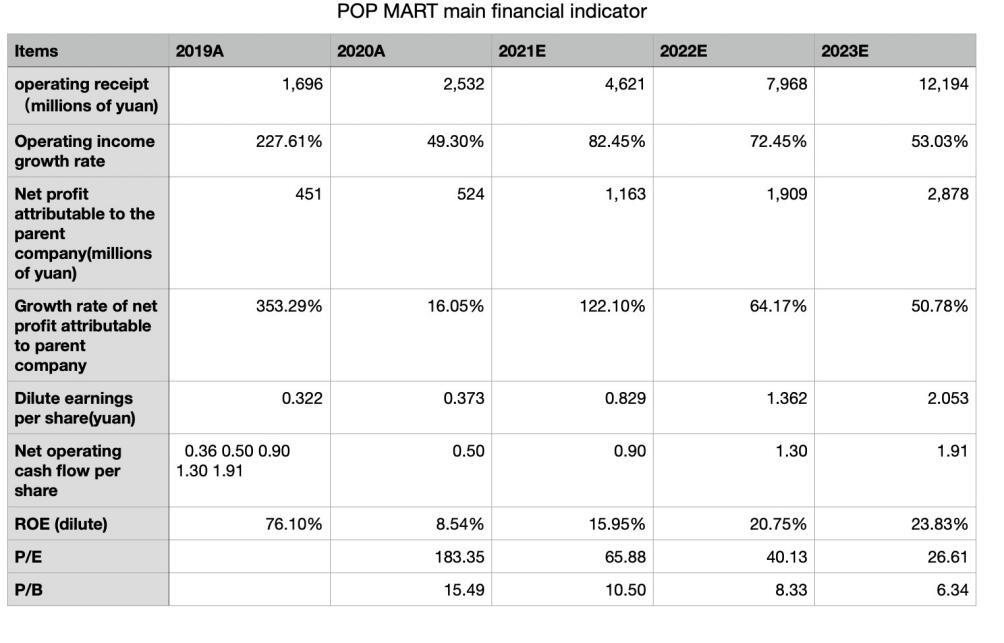
Figure 1. POP MART main financial indicators (Data source: Sinolink Securities Research Institute)
Up to September 2023, the total revenue of POPMART was 2.814 billion yuan, with a year-on-year growth of 19.3%. The operating profit reached 538 million yuan, with a year-on-year growth of 20.6%. The net profit was 477 million yuan, with a year-on-year growth of 43.3% [18]. Generally, China's blind box market is becoming more and more prevalent, and can be hardly affected by multiple external factors. A large number of blind box industries achieve the rapid growth of both domestic business income and profit, with a collectively excellent core business indicator. It can be seen that effectively combination of the blind box marketing and other marketing means will produce multiple benefits.
4.1.2 Recent Development Status of the ‘Blind Box + others’ Industry
With the explosion of the industry in the form of ‘blind box + toys’, the combination of beauty, digital collections, stationery, books, archaeology, food and blind box marketing is also popular among the public. For example, ‘leftovers blind box’ is to pack unsold leftovers in the form of a blind box and sell them to consumers at half price or less. Taking the earliest food magic bag (a special name for a blind box of leftovers) as an example, since it was launched in Changsha on April 16, 2021, it has basically covered the whole province of Hunan, and has successively opened 32 cities such as Beijing, Shanghai, Guangzhou, and reached cooperation with more than 300 well-known brands, reaching 2 million people deeply participating. In recent years, there have been more and more cases in restaurants, bakeries and supermarkets selling the remaining food in blind boxes at low prices. Through the ‘novelty psychology’ and the advantage of cheap and cost-effective, suppliers continue to expand sales and achieve significant marketing effects.
4.2 Strategy Analysis of Blind Box Marketing (Based on 4P Theory)
Nowadays, blind box marketing strategy is spread across a variety of industries and is closely integrated with the Internet in the new era. Therefore, compared with the past AIDMA model, AISAS model is more suitable for consumers' shopping decision analysis process in the Internet era. In this essay, blind box marketing strategy analysis will be based on AISAS consumer behavior analysis model (Attention-interesting-search-action-sharing). The 4p marketing strategy will be cut from all aspects, and the following step will comprehensively explain how blind box marketing strategy affects consumer behavior.
4.2.1 Product Strategy
The product is the foundation of any industry, and the target market will pay attention to it (the first link of AISAS) once the product of the industry is differentiated, the customer is even willing to pay a higher price. For product differentiation, blind box marketing uses the following ways: actual differentiation, service differentiation, image differentiation.
First, the practical differentiation is divided into several steps.
Product positioning. Products that use ‘blind box marketing’ tend to have specific attributes, and companies will also position their products by category. Generally speaking, products with high public preference or strong popularity are more suitable for blind box marketing. When selecting blind box products, enterprises will make judgments based on the needs of their customers and select products with high frequency of purchasing in the recent period so as to let the large inventory be unconsciously sold. Determining the target market and consumer groups of the blind box is also the key to the product's own positioning.
Quality assurance. Blind boxes need to pay more attention to the guarantee of quality compared with other ordinary products. Because the purchasing motivation of consumers is also caused by the psychology of curiosity, that is to say, they are often irrational when they make purchases. The moment they open the blind box, they will pay special attention to the contents of the blind box under the role of the gambler's psychology, and pay special attention to whether the blind box products have a high cost performance. Therefore, whether the quality is qualified is the key to the success of blind box marketing.
Packaging style. For more practical goods such as ‘concert ticket + blind box’, the outer packaging may not have a significant impact. However, for ‘toys + blind boxes’ or ‘beauty makeup+ blind boxes’, which are highly ornamental and have more female audiences, their curiosity and consumption desire will first be caused by some unique packaging styles and design concepts. For example, POPMART, a representative brand in the blind box industry, is a prevalent play brand with a high degree of recognition, which promotes consumption by tapping the needs of young consumers' ‘collection addiction’. In the case of the rapid development of blind boxes, POPMART has improved its packaging. They changed the packaging box to tear in order to reduce adhesion, and changed the material to activated carbon in order to avoid wasting resources. The improved blind box perfectly combines the packaging box with its own product concept to create a unique IP [22].
In addition, image differentiation is the paramount part for blind box products, and unique product thought has become the key to blind box marketing strategy. Molly Little Girl is the first popular play IP launched by POP MART, designed by Hong Kong designer Kenny Wong, with a beep mouth that concentrates the 2/8 rule of design (80% similarity and 20% difference with human faces), creating a difference. Subsequently, POPMART began to build product social attributes and expand product awareness and sales by bundling IP advantages. In addition to the product design itself, the detailed backstory and high emotional resonance can also arouse the customer's emotional motivation to create IP. Once the image differentiation meets the customer's expectation, it will arouse the customer's interest and generate the desire to search for the product (AISAS links 2 and 3).
Last but not least, blind box marketing also requires to be combined with service differentiation. Efficient service is one of the aspects that wins the favor of customers, including carrying out online group-buying, having stores on wechat mini programs or third-party platforms, improving the operation and maintenance ability of blind box product software etc. On the other hand, the provision of installation instructions is required more than other products as this is a new field for most of people, which helps users make better use of the blind box so as to win the trust of customers. At the same time, it’s also essential to coordinate with strong after-sales service. For instance, timely return visits and after-sales service can solve customers' problems as soon as possible, so that customers will consider their purchasing is a good choice.
4.2.2 Price Strategy
Generally speaking, companies are about to seek profit maximization, by weighing the balance between price and sales, supply and demand curves mention when prices rise, sales will generally decrease proportionally. Nevertheless, the blind box is an exception due to its price and sales that can be manipulated improperly. The major difference between consumers of blind box products and other products is that blind box consumers are irrational, and their purchase motivation is triggered by psychological effects (curiosity, gambling, loss aversion, etc). Some blind box sellers with proprietary IP will use IP uniqueness to create ‘hidden’ (a new and scarce product that has never been sold before), adding mystery to the consumer addiction. Meanwhile, retailers sell the two products together through a ‘fixed + hidden’ product layout, ‘solving’ the impasse that customers have been unable to draw ‘hidden’, by creating the illusion of a lack of goods to create hunger marketing and a sense of scarcity. Loss aversion, turnover effect and bird cage effect are effectively used to retain customers and generate fixed income. In the meantime, sellers often set up online second-hand markets and sell ‘hidden models’ at ultra-high prices, which generating unknowingly dominating sales and prices. It is reported that in recent years, the blind box second-hand market premium is serious, and the premium is even dozens of times.
4.2.3 Promotion Strategy
As a tool to deliver information to the target audience, the most significant aspects of blind box marketing are roughly divided into two categories: promotion and advertising.
First of all, creative advertising campaigns is able to build an image and even make the public form a certain degree of preference and acceptance. It is crucial for blind box advertising to use people's natural curiosity to further stimulate customers' attention, interest and desire. Secondly, the consumer surplus principle states that consumers always want as much surplus value as possible. Promotion is an essential link especially for the blind box, because after people have sufficient psychological consumption motivation, ‘promotion activities’ can be called a ‘fuse’ which directly affects people's buying behavior in most of the cases (AISAS 4 link). Therefore, some promotional activities will work such as discounts, buy one get one free offers, giveaways or sweepstakes. Especially in recent years, the development of the influencer economy, live streaming and short video promotion have increased people's consumption desire, which is a significant temptation for consumers.
4.2.4 Place Strategy
The ‘place’ refers to the path to purchase goods in the target market. The sales of blind box goods are mainly concentrated in large shopping malls and are sold through retailers. The positioning of the blind box is good with high quality and authoritative endorsement, which will be judged as worthwhile products due to the anchoring effect of people. For the online level, consumers often purchase on wechat mini programs or third-party platforms, and the operation and maintenance ability of blind box product software has been gradually improved, which also increases consumers' desire to buy. Online consumers can use props to increase the probability of buying desired products, and furthermore, they can spontaneously create wechat groups to exchange news, carry out group-buying and second-hand transactions, and share and promote products among people, thus achieving the ‘domino effect’ (the last link of AISAS). In addition, the offline vending machine belongs to the more effective path, the blind box series can be selected through the random form of falling products, but is not able to choose the specific box, so it has a strong randomness and stimulation. This form further magnifies people's gambling psychology and increases the probability of purchasing.

Figure 2. Marketing combinations (4P Theory) (Data source: drawing by the author)
4.3 Blind Box and the Mechanism Acts on Consumers Through Blind Box Marketing
Generally, based on the theory of consuming behaviour, consumers make determinations according to both the principle of consumer surplus and the principle of consumer balance (the principle of consumer surplus is the additional income that consumers think they can get psychologically; the principle of consumer equilibrium refers to that a single consumer allocates the limited budget to different goods in order to obtain the maximum utility. The equilibrium point of utility maximization can also be represented by the intersection of indifference curve and budget line). In order to achieve an exact amount of utility, ‘desires’, ‘preferences’, ‘commodity prices’, ‘budget constraints’ can be considered as the direct factors. Therefore, the stimulus of consuming behaviors can be divided mainly as ‘psychological motive’, ‘demand motive’ and ‘investment motive’ according to the basis of ‘blind box marketing +4p marketing theory’ strategy and influencing factors on effectiveness.
‘Psychological motivation’ is equivalent to stimulating the ‘desire’ of consumers. Consumers believe that buying blind boxes is the main way to express themselves, which inspires consumers to expect surprises. The offline vending machine in the channel strategy and the advertising in the promotion strategy will amplify the consumer's curiosity psychology, and under the influence of loss aversion, turnover effect and bird cage effect, consumers will buy out of control because of the fear of loss and the strong aversion to loss brought about by the change in purchase expectations. Since many people have this characteristic, the blind box will become popular among a group of people, and then more and more people will follow their behavior because of the herd effect, resulting in irrational consumption motivation. Based on the above analysis, hypotheses can be put forward:
H1: Place strategy in blind box marketing has a positive impact on consumer behavior through psychological motivation
H2: Promotion strategy in blind box marketing has a positive impact on consumer behavior through psychological motivation
‘Demand motivation’ includes product demand and own demand, including IP co-branding, packaging quality demand, consumer experience demand and demand for blind box brand awareness. In the above-mentioned product strategies, actual differentiation, image differentiation and service differentiation are particularly effective in meeting the product needs of customers, and win the purchase of consumers through quality assurance, unique packaging style, efficient service and IP creation. The self-requirement mainly includes consumer preferences. For example, if they are blind box lovers or risk lovers, their own utility will be higher than some risk neutral or avoidant, and their preference for goods will naturally be higher than others. The total consumer demand for blind boxes determines the frequency and quantity of blind box goods purchased by consumers. Based on the above analysis, hypothesis is proposed:
H3: Product strategy in blind box marketing has a positive impact on consumer behavior through demand motivation
‘Investment motivation’ is the motivation produced under the joint action of ‘commodity price’ and ‘budget constraint’. According to the theory of consumer behavior, these two variables will lead to the change of the budget line, and the move of the budget line will directly affect the change of indifference curve (| MRS | =p1/p2) and affect the total utility of consumers. Some people will specially buy the blind box in order to earn the difference, so as to obtain profits, because the blind box marketing market will use the irrational consumption of consumers and appear in the second-hand market, which is a phenomenon of ‘non-interested investment’. However, there are also some groups who buy blind boxes because of their interest, but due to the high commodity price or the limited budget constraint, they will choose to sell through the second-hand market and gain the price difference in order to reduce the impact of price and budget, this phenomenon is called ‘interest investment’. Based on the above analysis, hypothesis is proposed:
H4: Price strategy in blind box marketing has a positive impact on consumer behavior through investment motivation
4.4 Analysis of Empirical Results
4.4.1 Data Sources
The social research was carried out according to the above analysis and the questionnaire survey was mainly conducted online. In order to ensure the authenticity of the questionnaire, individuals were randomly selected for return visit after the questionnaire was issued. According to random sampling method, there are a total of 384 samples in this questionnaire survey, of which more than 70.77% of people have some understanding of blind boxes. This questionnaire divides age groups into four parts (less than 18 years old, 18-24 years old, 25-34 years old and over 35 years old), and significant differences are found among these four groups. Generally speaking, the group under 18 years old is the most sensitive to various marketing strategies; the sensitivity was slightly lower over 35 years old, but not significantly lower; the common denominator of the 18–34-year-old group is that they have just entered the society, tried to start a family and establish a career, meanwhile, their ideas are gradually mature, and their consumption concept is generally ‘practical’, so they show less interest in blind boxes. At the same time, groups aged 18-24 and 25-34 have different blind box marketing strategies due to subtle differences. Therefore, the following step is to make comparisons to the different effects of marketing strategies between different age groups.
4.4.2 Regression Analysis of Age Segmentation and Chart Data Analysis
Since different age groups are affected by marketing strategies to different degrees, through regression analysis, age is taken as an independent variable, and the degree of blind box understanding, promotion strategy, place strategy, product strategy and price strategy are respectively taken as dependent variables to study the direct relationship between them. (The regression equation is: dependent variable = constant + regression coefficient 1 * independent variable 1)
Before mentioning the link between blind box marketing strategy and age, in terms of the purchase interest of consumers in the form of products packaged in blind boxes (without marketing strategy), there is a negative correlation between the independent variable age and the dependent variable interest. It’s obvious that the older the age, the less interest in blind box products. However, it can be seen that the R² value is 0.002, and the adjusted R² value is -0.000, indicating that the model has weak interpretation ability.
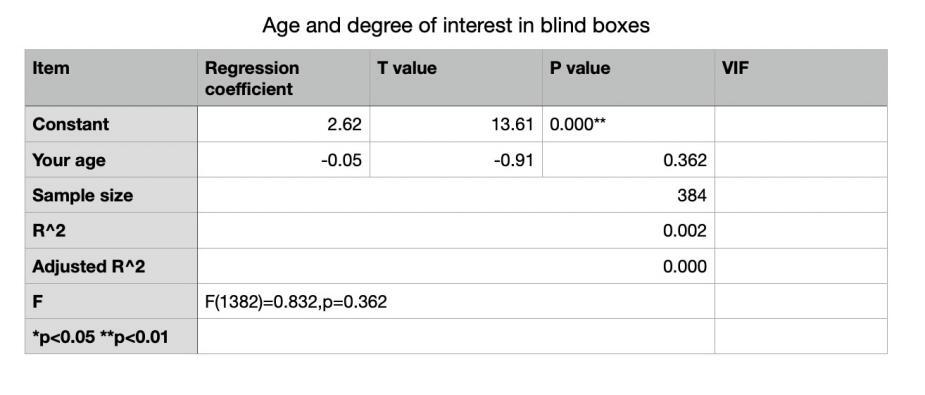
Figure 3. Age and degree of interest in blind boxes (Data source: drawing by the author)
From Graph4 (the value of the line chart is the average, with a perfect score of 5), the group under 18 years old shows the most interest, but surprisingly, there is an upward trend among the ages of 18-35+. As a general rule, interest in blind boxes diminishes with age, but this graph shows an abnormal trend. Therefore, we can find that the consumption priority of 18-34 years old group may not be on novelty and stimulation. Instead, for the group who just entered the society to get married and establish a career, their main concern is practical and secure. In addition, their budget constraints will be tighter than other age groups because they are just starting out, so this anomaly may occur.

Figure 4. Degree of interest in blind boxes for each age (Data source: drawing by the author)
First of all, ‘Efficient service /IP design/packaging style/quality assurance for blind boxes’ belongs to product strategy, and according to regression analysis, the regression coefficient is -0.09, indicating that age is negatively correlated with product strategy. In addition, it shows that the five factors of ‘efficient service /IP design/packaging style/quality assurance of blind boxes’ have a significant impact on purchasing behavior.
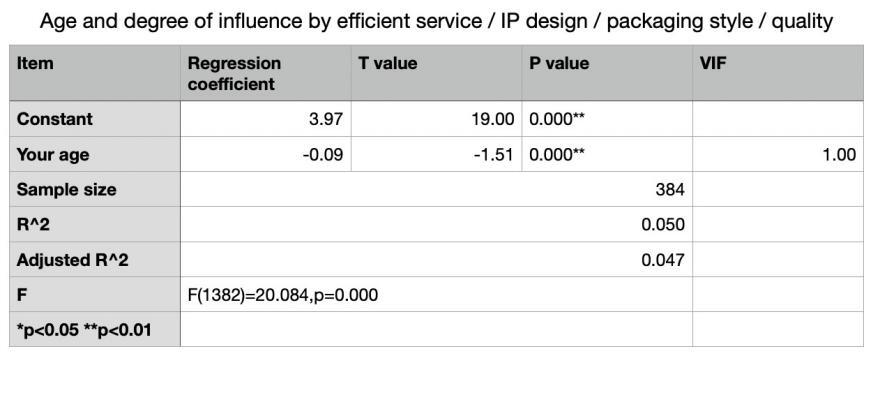
Figure 5. Age and degree of influence by efficient service/IP design/packaging style/quality (Data source: drawing by the author)
At the same time, Graph6 also indicates that even in the lowest value of over 35 years old, there is a score of 2.86 which is relatively high. The result drawn here is not far from the hypothesis, which means anyone's purchase behavior must be based on the quality and characteristics of the product itself.
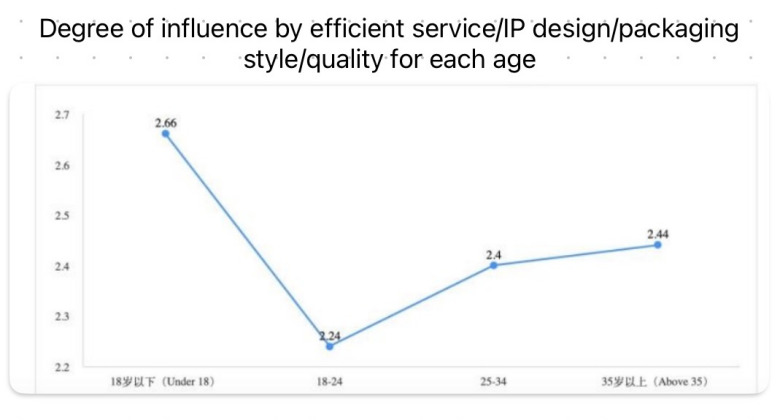
Fgiure 6. Degree of influence by efficient service/IP design/packaging style/quality for each age (Data source: drawing by the author)
Secondly, ‘egg twisting machine or offline vending machine’ belongs to the place strategy, according to the regression analysis, the regression coefficient is -0.11, R² is 0.009, and the adjustment R² is 0.006, indicating that the age is negatively correlated with the channel strategy, and the independent variable has a weak ability to explain the dependent variable. It can be seen that age has a certain impact on the experience of using an egg twisting machine or offline vending machine, but the impact is subtle. It’s because elder consumers focus more on the quality and practicality of products, while younger consumers are more focused on the design and experience of products. In the previous data survey, we can also see that the main audience of blind boxes are mainly young people, which once again confirms the result of the data.
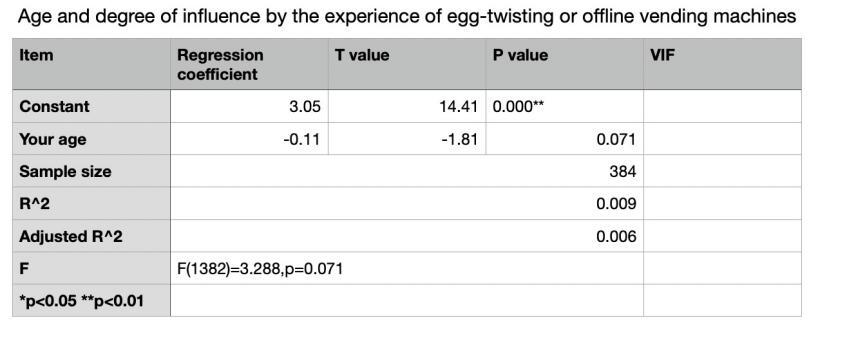
Figure 7. Age and degree of influence by the experience of egg-twisting or offline vending machines (Data source: drawing by the author)
In Graph8 overall, although more than half of the respondents (50%) believe that using egg twisting machines or offline vending machines makes the extraction of blind boxes more random and stimulating, the largest proportion of respondents believe that the effect is 0%. Therefore, although the egg twisting machine or offline vending machine can amplify people's curiosity and gambling psychology, it is only effective for some people, and can be used as an auxiliary marketing strategy, but it must not be the dominant one. It can be said that it has a positive effect on buying behavior, but it is not significant.
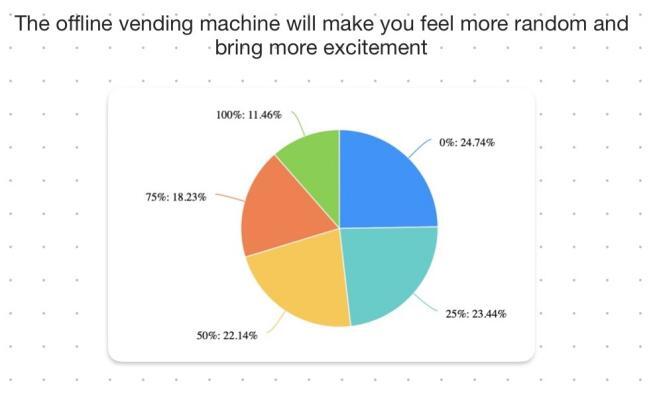
Figure 8. Survey results (pie chart) (Data source: drawing by the author)
Thirdly, ‘Eye-catching advertising and promotions’ and ‘referrals from friends and online media’ are promotional strategies. The regression coefficients of the two dependent variables are -0.02 and -0.09, respectively, which are negatively correlated with age. Meanwhile, p>0.05 for both of them indicates that the regression coefficients are not significant, which means they are hardly affected by age.
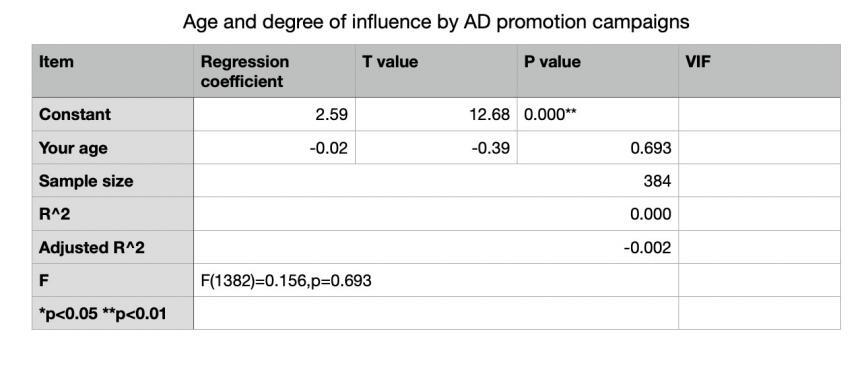
Figure 9. Age and degree of influence by AD promotion campaign (Data source: drawing by the author)
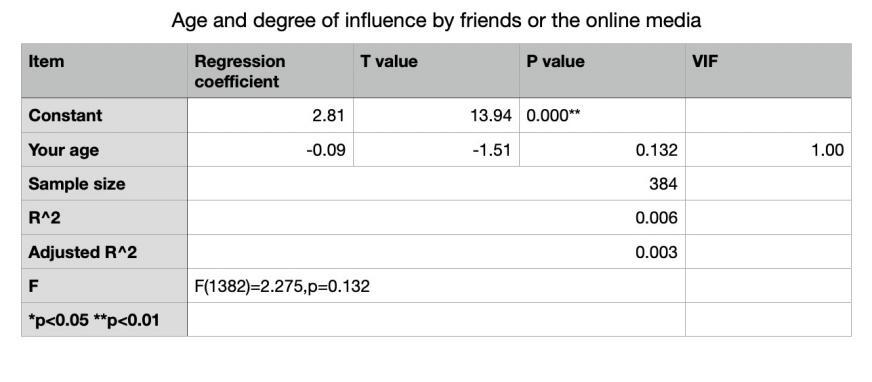
Figure 10. Age and degree of influence by friends or the online media (Data source: drawing by the author)
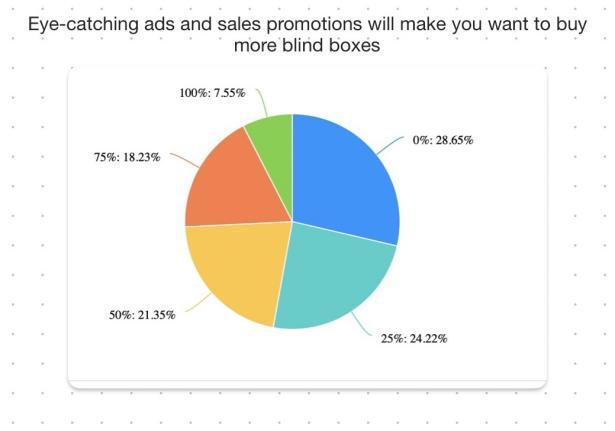
Figure 11. Survey results (pie chart2) (Data source: drawing by the author)
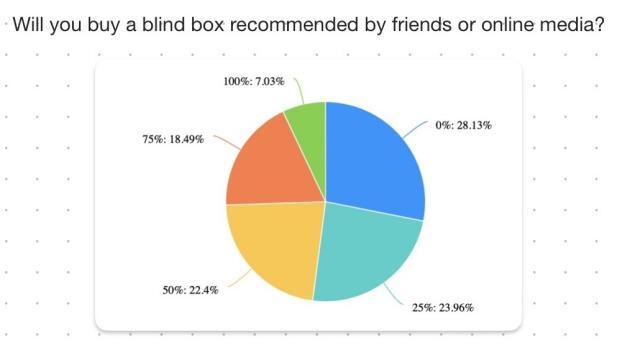
Figure 12. Survey results (pie chart3) (Data source: drawing by the author)
From Graph13, 25-34 age group is the most affected, while 18-24 age group is the least affected age group. As the cognition of products between 25 and 34 years old is not as mature as that over 35 years old, they virtually rely on advertising to choose products. 18-24 age group has the same nature as 25-34 age one, but due to the relatively completed cognition of the blind box, they do not have to depend on advertising to figure out the characteristics of different brands, so advertising does not have much impact on them. In general, in the promotion strategy, the proportion of people who think that the marketing strategy has no impact on them is as high as 28.65%, and the majority of people think that the marketing strategy has only a small impact. The same trend is also shown in the strategy of ‘referrals from friends and online media’. These results indicate that although promotion strategy can affect psychological motivation, it has no significant positive effect on purchasing behavior.

Figure 13. Degree of influence by AD promotion campaign for each age (Data source: drawing by the author)
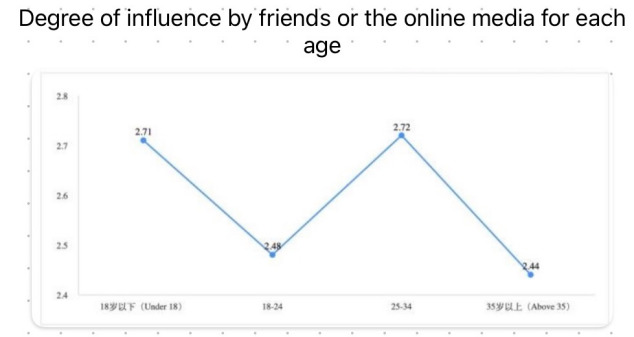
Figure 14. Degree of influence by friends or the online media for each age (Data source: drawing by the author)
Fifthly, ‘second-hand market’ belongs to the price strategy. According to the regression analysis, the regression coefficient is -0.12, which means that with the growth of age, people are more willing to invest in assets such as real estate, stocks and other assets that can bring more tremendous output than spending time and cost on blind box investment. Therefore, for the group under the age of 25, most will buy blind boxes for investment motives, but the group over the age of 25 is just the opposite.

Figure 15. Age and degree of influence by second-hand market profit (Data source: drawing by the author)
4.4.3 Analysis by Synthesis
Through the analysis of age groups, it can be concluded that H1 and H3 are valid in any age group. H2 does not hold true in all the age group, while the 25-34 age group has some reference value. H4 is true for those under 25 years old, but not for those over 25 years old.
Most of the hypotheses have been verified. However, for the place strategy and promotion strategy, there’s a certain impact on consumer psychological motivation, but is not significant on consumer purchasing behavior. On the contrary, when the product has a characteristic IP, high quality, good after-sales service and other substantive improvements, consumers are more likely to have direct purchase. Compared with traditional products, blind box is a special marketing mode. If consumers open unknown products and find that the product has poor quality and no features, their confidence in blind box products will become weaker and instead choosing to buy something more secure conventional. The price strategy has different degrees of influence due to different age groups. Generally, since blind box investment is more in line with the budget constraints and investment needs of young people, it will have a significant positive impact on consumer purchasing behavior.
4.5 Suggestions of Blind Box Marketing Strategy
4.5.1 Suggestions on Product Strategy
Efficient service, unique IP design, elegant packaging styles and reliable quality assurance will make consumers more likely to buy these products (Figure 6). In terms of quality, although most consumers do not buy blind boxes for the pursuit of quality as an initial aim, but when the quality of the received products is wrong, consumers will choose to return or buy substitutes. In terms of products, enterprises must devote sufficient efforts to IP design and quality improvement, pay attention to IP culture mining, strengthen IP operation and develop its derivatives. Meanwhile, in terms of service and consuming experience, the decoration of offline stores should be more participatory and experienced by applying ‘nudge effect’. For example, the layout of the store can make consumers unconsciously purchase the goods that the merchant wants them to buy. For online stores, customer service training should be strengthened to enable consumers to obtain better service experience.
4.5.2 Suggestions on the Place Strategy and Promotion Strategy
Merchants can do some appropriate promotion, such as making the blind box known to the public through advertising or we-media, using a variety of social platforms and exclusive apps to build a strong social fan interaction community and open interactive topics as well as second-hand trading platforms. The suppliers should make good use of subway stations by placing egg twisting and offline vending machines, it only requires a little cost to stimulate the customer's curiosity psychology (Figure13) (Figure14).
4.5.3 Suggestions on Price Strategy
Official flagship stores can properly control blind box sales in the second-hand market and promote them to young consumer groups through we-media or big data, because consumer groups under the age of 25 are more likely to be attracted by blind box investment. However, at the same time, because most of the consumers of blind boxes on the market are teenagers, their self-control ability and consumption concept are not perfect, the temptation of blind boxes is easy to make teenagers addicted to them, and even advocate hedonism, opportunism, etc., which seriously affects their physical and mental health development. As a company, in addition to pursuing profit, it should also enhance its social responsibility and guide consumers to make rational purchases. The relevant departments should also strengthen the management of the potential risks behind the blind box to prevent the abuse of blind box marketing (Figure15).
Overall, the above are suggestions for companies to implement blind box marketing strategies, which are designed based on the degree of influence of blind box marketing strategies on consumer behavior. Sellers can maximize sales through the combination of blind box marketing and 4P marketing strategies. Of course, there are two things a company needs to consider before implementing a plan and adopting a proposal. First, the implementation of the program needs to be in compliance with legal conditions, if there is excessive marketing or market failure, will be subject to criminal responsibility. Second, this paper is based on a limited perspective, but in fact there will be more uncertainties, so further research on more impact perspectives is needed in the future to draw more practical conclusions.
5 Conclusion
Taking the blind box market and the good prospect of blind box marketing as the starting point, this paper is separated into two sections: literature review and discussion. This paper found to what extent the combination of blind box marketing and other marketing strategies will affect people's consuming behavior. Based on previous literature, this paper first studies how merchants influence the desire, preference, commodity price, budget constraint and utility of consumers in decision-making through blind box marketing strategies from the consumer behavior theory and behavioral economics theory. As well as how it amplifies people's ‘irrational’ consumption behavior and stimulates people's purchase desire. In the discussion part, according to AISAS consumer behavior analysis model and with the help of Questionnaire Star and spas software, this paper studies to what extent the strategy of ‘blind box marketing +4p marketing theory’ has an influence on consumer purchasing behavior through ‘psychological motivation’, ‘demand motivation’ and ‘investment motivation’. Theoretically speaking, all of 4P marketing strategies should have a positive impact on consumer behavior. However, empirical research results reveal that some substantial improvements such as distinctive IP, high quality and good after-sales service are more likely to directly generate purchasing behavior for consumers. For the price strategy that customers can earn the difference through the second-hand market, young people who have not yet obtained employment are more likely to be attracted by blind box investment. However, it can also be seen that the impact of promotion strategy and place strategy on consumer purchasing behavior is not significant. For implications for future research, this study provides valuable basic data, including the association between blind box marketing strategies and age, and the degree of influence of blind box marketing strategies on consumer purchasing behavior. Further research on blind boxes in the future needs to broaden the research ideas on this basis, such as classifying the individual characteristics, or proposing more influential factors and marketing methods from different angles. Therefore, although the results of this survey have certain reference significance, it still needs to be considered from multiple perspectives and variables to achieve the effect that best fits the actual situation.
References
[1]. Chi, R. (2021). Why China’s blind box economy is a good bet for brands. The Drum. Available at: https://www.thedrum.com/opinion/2021/10/20/why-china-s-blind-box-economy-good-bet-brands (Accessed: 03 September 2023).
[2]. Zhang, Y., Zhou, H., & Qin, J. (2022). Research on the effect of uncertain rewards on impulsive purchase intention of blind box products. Frontiers. Available at: https://www.frontiersin.org/articles/10.3389/fnbeh.2022.946337/full (Accessed: 03 September 2023).
[3]. Yang, C., Chen, X., Sun, J., Wei, W., Miao, W., & Gu, C. (2022). Could surplus food in blind box form increase consumers’ purchase intention? Agriculture, 12(6), 864. https://doi.org/10.3390/agriculture12060864
[4]. Industry report database (no date). 2022 Blind Box Economic Innovation and Development White Paper: including Bubble Mart, Henan Museum, etc. Zhihu column. Available at: https://zhuanlan.zhihu.com/p/590978963 (Accessed: 03 September 2023).
[5]. 10 million people participate! Tongcheng Travel blind box detonated Qingming travel (no date). Available at: https://baijiahao.baidu.com/s?id=1696095518697768877&wfr=spider&for=pc (Accessed: 04 December 2023).
[6]. Chudziak, J. (2018). On existence and uniqueness of the principle of equivalent utility under Cumulative Prospect Theory. Insurance: Mathematics and Economics, 79, 243–246. https://doi.org/10.1016/j.insmatheco.2018.02.001
[7]. Xuani, Y. (2022). Research on blind box consumer behavior decision making based on behavioral economics. Chinese Business Theory, (20), 58–60. https://doi.org/10.19699/j.cnki.issn2096-0298.2022.20.058
[8]. Jiawei, C. (2020). Research on product communication marketing—Taking blind box as an example. International Public Relations, (10), 295–296. https://doi.org/10.16645/j.cnki.cn11-5281/c.2020.10.145
[9]. Yecheng, Z. (2021). The mystery of blind box economy from the perspective of behavioral economics. International Business Finance and Accounting, (16), 88–90.
[10]. Shen, Z., & Zhang, X. (2022). Analysis on the "obsessive password" behind the diversification of blind box economy. Modern Marketing (Next Day), (12), 35–37. https://doi.org/10.19932/j.cnki.22-1256/F.2022.12.035
[11]. Gao, Y. (2022, January 12). How do blind boxes “blind” customers’ minds? A qualitative study about purchase decisions of blind box. Unknown. https://doi.org/10.13140/RG.2.2.36339.20000
[12]. Wang, W., Meng, Y., & Xu, M. (2022). The driving mechanism of social support and emotional motivation on blind box consumption. Business Economics Research, (13), 62–67.
[13]. Fan, L., & Wang, Y. (2023). Research on influencing factors of consumer purchasing behavior in blind box marketing. National Circulation Economy, (5), 4–7. https://doi.org/10.16834/j.cnki.issn1009-5292.2023.05.028
[14]. Hanwen, L. (2022). Research on the influencing factors of blind box consumption based on grounded theory. Chinese Market, (24), 24–27. https://doi.org/10.13939/j.cnki.zgsc.2022.24.024
[15]. Li, X. (2022). Influencing factors of consumers' blind box purchasing behavior (Master's Thesis, Dongbei University of Finance and Economics). Available at: https://kns.cnki.net/kcms2/article/abstract?v=6Zsqnb4eDBUzoBfENAOeHUM5SP0ZAtdfKNXJ2exBP7DA9kg4XyGwpZlNW9NtsW02rwRDAhk8j83yZ_qFlvOz9n46UIBNg2bY_G4NyBs-URle1pqrwz9FGOB_n3i7pRzK
[16]. Duan, Y., Xu, S., Wang, Y., Zhang, Y., Wang, Y., & Chen, R. (2022). Blind box over-engagement and suicide risk among adolescents and young adults: Results of a large-scale survey. EClinicalMedicine, 51, 101575. https://doi.org/10.1016/j.eclinm.2022.101575
[17]. Huajing Industrial Economy Research Institute. (2023). 2023 China Blind Box Industry Market Research Report: Qualitative Analysis & Development. Available at: https://www.sohu.com/a/697192052_120113054 (Accessed: 09 September 2023).
[18]. Baidu Stock Connect - Technology makes investing easier (no date). Available at: https://gushitong.baidu.com/stock/hk-09992?mainTab=%E8%B4%A2%E5%8A%A1&sheet=%E5%88%A9%E6%B6%A6%E5%88%86%E9%85%8D%E8%A1%A8 (Accessed: 09 September 2023).
[19]. How can young people become addicted to the ‘blind leftovers box’? (no date). Available at: https://baijiahao.baidu.com/s?id=1768947417383234473&wfr=spider&for=pc (Accessed: 09 September 2023).
[20]. OpenStax. (n.d.). Principles of Microeconomics. Retrieved December 6, 2023, from https://openstax.org/details/books/principles-microeconomics
[21]. China Economic Industry Research Institute. (2020). Analysis of the development status of China's blind box industry, hidden models drive the rapid development of the second-hand blind box market. Zhihu column. Available at: https://zhuanlan.zhihu.com/p/458982571 (Accessed: 09 September 2023).
[22]. Wu, S., & Liu, J. (2021). Bubble is analysed, core competitiveness. Journal of Social Science Front, 10(7), 1818–1823. https://doi.org/10.12677/ASS.2021.107252
[23]. 2023 China blind box industry development trend report (December 4, 2023). Zhihu column. Available at: https://zhuanlan.zhihu.com/p/654579931
Cite this article
Ke,Y. (2024). To What Extent Does Blind Box Marketing Affect People’s Consuming Behavior?. Journal of Applied Economics and Policy Studies,10,73-87.
Data availability
The datasets used and/or analyzed during the current study will be available from the authors upon reasonable request.
Disclaimer/Publisher's Note
The statements, opinions and data contained in all publications are solely those of the individual author(s) and contributor(s) and not of EWA Publishing and/or the editor(s). EWA Publishing and/or the editor(s) disclaim responsibility for any injury to people or property resulting from any ideas, methods, instructions or products referred to in the content.
About volume
Journal:Journal of Applied Economics and Policy Studies
© 2024 by the author(s). Licensee EWA Publishing, Oxford, UK. This article is an open access article distributed under the terms and
conditions of the Creative Commons Attribution (CC BY) license. Authors who
publish this series agree to the following terms:
1. Authors retain copyright and grant the series right of first publication with the work simultaneously licensed under a Creative Commons
Attribution License that allows others to share the work with an acknowledgment of the work's authorship and initial publication in this
series.
2. Authors are able to enter into separate, additional contractual arrangements for the non-exclusive distribution of the series's published
version of the work (e.g., post it to an institutional repository or publish it in a book), with an acknowledgment of its initial
publication in this series.
3. Authors are permitted and encouraged to post their work online (e.g., in institutional repositories or on their website) prior to and
during the submission process, as it can lead to productive exchanges, as well as earlier and greater citation of published work (See
Open access policy for details).
References
[1]. Chi, R. (2021). Why China’s blind box economy is a good bet for brands. The Drum. Available at: https://www.thedrum.com/opinion/2021/10/20/why-china-s-blind-box-economy-good-bet-brands (Accessed: 03 September 2023).
[2]. Zhang, Y., Zhou, H., & Qin, J. (2022). Research on the effect of uncertain rewards on impulsive purchase intention of blind box products. Frontiers. Available at: https://www.frontiersin.org/articles/10.3389/fnbeh.2022.946337/full (Accessed: 03 September 2023).
[3]. Yang, C., Chen, X., Sun, J., Wei, W., Miao, W., & Gu, C. (2022). Could surplus food in blind box form increase consumers’ purchase intention? Agriculture, 12(6), 864. https://doi.org/10.3390/agriculture12060864
[4]. Industry report database (no date). 2022 Blind Box Economic Innovation and Development White Paper: including Bubble Mart, Henan Museum, etc. Zhihu column. Available at: https://zhuanlan.zhihu.com/p/590978963 (Accessed: 03 September 2023).
[5]. 10 million people participate! Tongcheng Travel blind box detonated Qingming travel (no date). Available at: https://baijiahao.baidu.com/s?id=1696095518697768877&wfr=spider&for=pc (Accessed: 04 December 2023).
[6]. Chudziak, J. (2018). On existence and uniqueness of the principle of equivalent utility under Cumulative Prospect Theory. Insurance: Mathematics and Economics, 79, 243–246. https://doi.org/10.1016/j.insmatheco.2018.02.001
[7]. Xuani, Y. (2022). Research on blind box consumer behavior decision making based on behavioral economics. Chinese Business Theory, (20), 58–60. https://doi.org/10.19699/j.cnki.issn2096-0298.2022.20.058
[8]. Jiawei, C. (2020). Research on product communication marketing—Taking blind box as an example. International Public Relations, (10), 295–296. https://doi.org/10.16645/j.cnki.cn11-5281/c.2020.10.145
[9]. Yecheng, Z. (2021). The mystery of blind box economy from the perspective of behavioral economics. International Business Finance and Accounting, (16), 88–90.
[10]. Shen, Z., & Zhang, X. (2022). Analysis on the "obsessive password" behind the diversification of blind box economy. Modern Marketing (Next Day), (12), 35–37. https://doi.org/10.19932/j.cnki.22-1256/F.2022.12.035
[11]. Gao, Y. (2022, January 12). How do blind boxes “blind” customers’ minds? A qualitative study about purchase decisions of blind box. Unknown. https://doi.org/10.13140/RG.2.2.36339.20000
[12]. Wang, W., Meng, Y., & Xu, M. (2022). The driving mechanism of social support and emotional motivation on blind box consumption. Business Economics Research, (13), 62–67.
[13]. Fan, L., & Wang, Y. (2023). Research on influencing factors of consumer purchasing behavior in blind box marketing. National Circulation Economy, (5), 4–7. https://doi.org/10.16834/j.cnki.issn1009-5292.2023.05.028
[14]. Hanwen, L. (2022). Research on the influencing factors of blind box consumption based on grounded theory. Chinese Market, (24), 24–27. https://doi.org/10.13939/j.cnki.zgsc.2022.24.024
[15]. Li, X. (2022). Influencing factors of consumers' blind box purchasing behavior (Master's Thesis, Dongbei University of Finance and Economics). Available at: https://kns.cnki.net/kcms2/article/abstract?v=6Zsqnb4eDBUzoBfENAOeHUM5SP0ZAtdfKNXJ2exBP7DA9kg4XyGwpZlNW9NtsW02rwRDAhk8j83yZ_qFlvOz9n46UIBNg2bY_G4NyBs-URle1pqrwz9FGOB_n3i7pRzK
[16]. Duan, Y., Xu, S., Wang, Y., Zhang, Y., Wang, Y., & Chen, R. (2022). Blind box over-engagement and suicide risk among adolescents and young adults: Results of a large-scale survey. EClinicalMedicine, 51, 101575. https://doi.org/10.1016/j.eclinm.2022.101575
[17]. Huajing Industrial Economy Research Institute. (2023). 2023 China Blind Box Industry Market Research Report: Qualitative Analysis & Development. Available at: https://www.sohu.com/a/697192052_120113054 (Accessed: 09 September 2023).
[18]. Baidu Stock Connect - Technology makes investing easier (no date). Available at: https://gushitong.baidu.com/stock/hk-09992?mainTab=%E8%B4%A2%E5%8A%A1&sheet=%E5%88%A9%E6%B6%A6%E5%88%86%E9%85%8D%E8%A1%A8 (Accessed: 09 September 2023).
[19]. How can young people become addicted to the ‘blind leftovers box’? (no date). Available at: https://baijiahao.baidu.com/s?id=1768947417383234473&wfr=spider&for=pc (Accessed: 09 September 2023).
[20]. OpenStax. (n.d.). Principles of Microeconomics. Retrieved December 6, 2023, from https://openstax.org/details/books/principles-microeconomics
[21]. China Economic Industry Research Institute. (2020). Analysis of the development status of China's blind box industry, hidden models drive the rapid development of the second-hand blind box market. Zhihu column. Available at: https://zhuanlan.zhihu.com/p/458982571 (Accessed: 09 September 2023).
[22]. Wu, S., & Liu, J. (2021). Bubble is analysed, core competitiveness. Journal of Social Science Front, 10(7), 1818–1823. https://doi.org/10.12677/ASS.2021.107252
[23]. 2023 China blind box industry development trend report (December 4, 2023). Zhihu column. Available at: https://zhuanlan.zhihu.com/p/654579931





